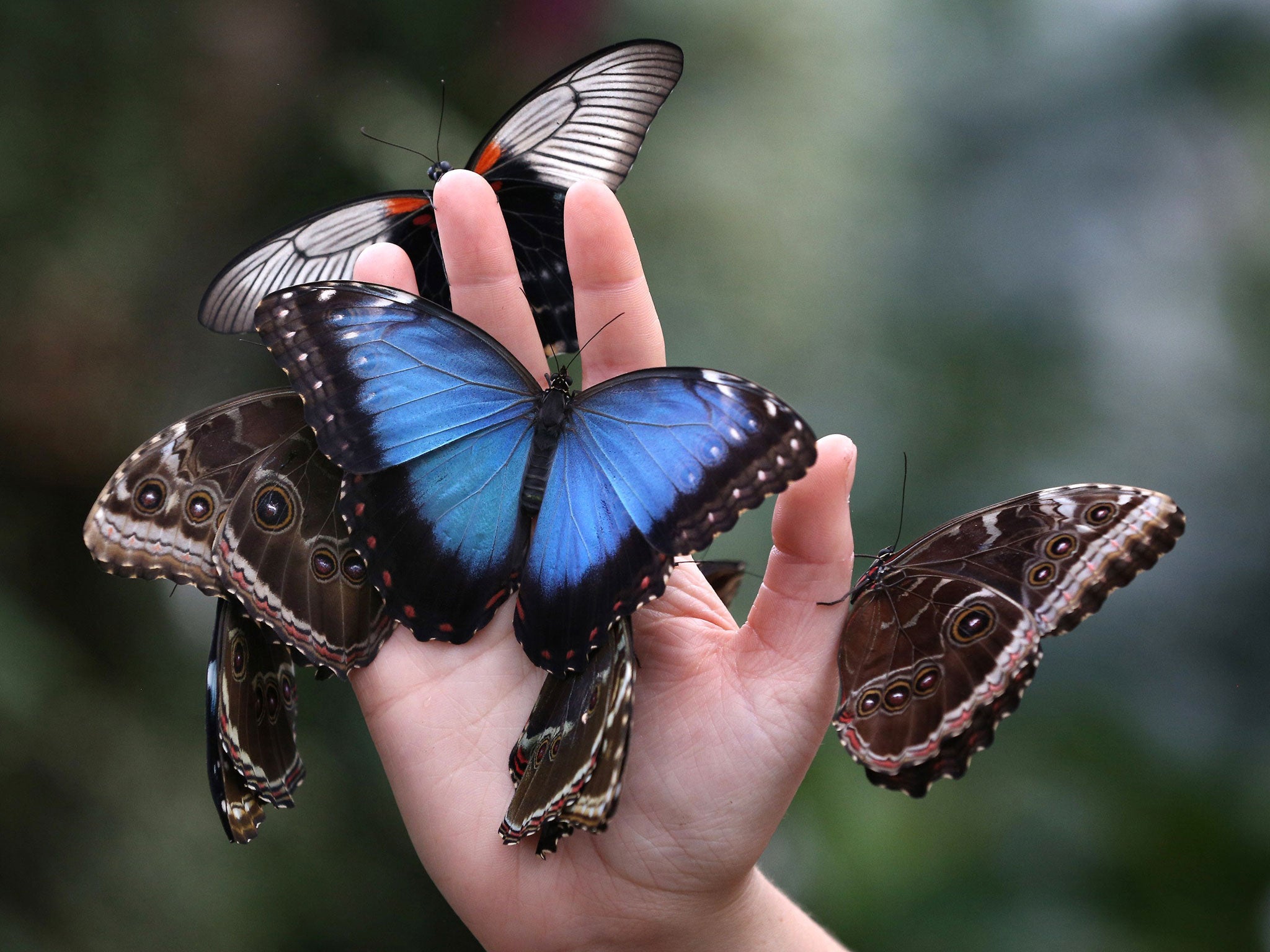What’s the best way to survive winter? Ask a butterfly, because they know better than most
Our Environment Editor, who has published at length on these beautiful creatures, reflects on their life cycle. Plus: a festival of fieldfares

Earlier this week, Nasa issued a satellite photo of a stark white Britain plastered in ice and snow, and I thought to myself it looked striking, but lifeless. It’s easy to have the same feeling sometimes at ground level, gazing on a snowbound countryside: it has become a barren white desert. Which, of course, is mistaken entirely.
Under the frozen blanket, life is abounding but sleeping: the seeds of a thousand plant species are just waiting for the sun to knock on their door; insects are in the same position. But whereas seeds are seeds, insects – let’s take butterflies – can have very different identities under the snow.
The great wonder of butterflies, of course – the attribute which has charmed children down the centuries – is metamorphosis: keep a caterpillar in your bedroom and eventually it will turn into something sensational.
In all, butterflies have four stages in their life cycle: egg, caterpillar, pupa or chrysalis, and adult. And an aspect of this which has long fascinated me is that different butterfly species overwinter using all four of these forms.
I wrote about it here last year. Of Britain’s 58 types of butterfly, nine spend the winter as an egg; 32 spend it as a caterpillar; 11 go through the cold times as a chrysalis; and six winter as fully grown adults.
All the 11 browns, for example, from the meadow brown to the gatekeeper, overwinter as caterpillars, whereas each of the five whites, from the large white to the green-veined white, winters as a chrysalis, and the three well-known, related and very colourful species – the small tortoiseshell, the peacock and the comma – all spend the winter as fully grown adults, often hiding in houses and garden sheds.
What I had never asked myself until recently, though, was why different species choose such radically different strategies. It won’t be random. There must be a reason. I tend to believe that, with evolution, there’s a reason for everything (just don’t ask me what my nipples are for, OK?).
What I supposed was that it would represent different ways of coping with the cold; this one is warmer as egg, that one as a pupa. But hankering after the truth, I rang up the man who knows more about butterflies than anyone else in Britain, Jeremy Thomas, Professor of Ecology at Oxford (he who brought the large blue back from extinction, and wrote the best book on British butterflies ever published).
Jeremy quickly disabused me of my ignorance: the strategy you use to overwinter as a butterfly, he explained, allows you to synchronise your emergence as a caterpillar the next year with the availability of your food plant. It’s not about keeping warm: it’s about timing.
Most caterpillars are entirely dependent on a very small range of plants, or just a single one; and so the caterpillar has to start feeding when the plant is available, or at its best. It also has to avoid competition.
Jeremy gave me a vivid example in the case of two blue butterflies, the chalkhill blue and the Adonis blue, among our loveliest insects of high summer, the first a milky pale blue – like a sky with thin, high clouds – the second the dazzling iridescent blue of the sea in full sun. They are closely related; but whereas the chalkhill blue overwinters as an egg, the Adonis blue does so as a caterpillar.
The reason is that they share the same food plant on the chalk downland where they are found, horseshoe vetch; and if both began feeding on it at the same time, there might not be enough to go around. So the Adonis, already a caterpillar when the winter ends, has a head start; whereas the chalkhill, as an egg, has to catch up, and comes out as a caterpillar about six weeks later, so it is not in direct feeding competition with its cousin, which by then has become a chrysalis.
I shall look at them with even more interest in future, although just picturing them in my mind’s eye now, at the advent of February, is enough to lift the spirits.
A festival of fieldfares
Last week, I wrote about that boisterous, colourful, winter thrush from Scandinavia, the fieldfare, coming into my south-west London suburban garden for the first time to feed on berries, because of the hard winter; 21 people from all over the country have since emailed me with details of the same thing happening to them. I’m glad I’m not alone in enjoying one of the best compensations for a Big Freeze.
Subscribe to Independent Premium to bookmark this article
Want to bookmark your favourite articles and stories to read or reference later? Start your Independent Premium subscription today.

Join our commenting forum
Join thought-provoking conversations, follow other Independent readers and see their replies